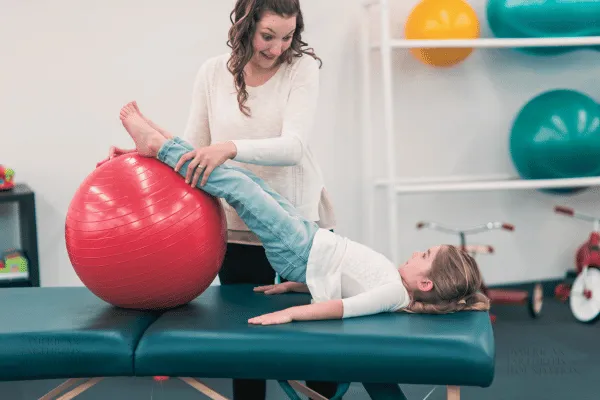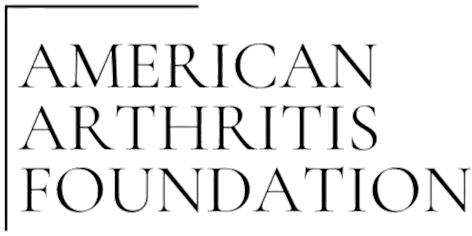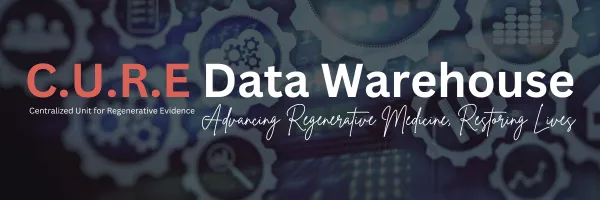Arthritis Treatments
Arthritis treatment primarily aims to alleviate pain, reduce joint inflammation, and improve mobility, ensuring a better quality of life for those affected. Depending on the type and severity of arthritis, treatment options can vary from over-the-counter pain relievers and anti-inflammatory drugs to physical therapy, dietary changes, and even surgical interventions in advanced cases. Recent advancements also explore the potential of biologics and disease-modifying antirheumatic drugs (DMARDs) for certain forms of arthritis. Complementary therapies, like acupuncture and massage, can also offer additional relief for some patients. Regular consultation with a rheumatologist or physician is essential to tailor an effective treatment plan.

Exercise and Other Therapies Ease Pain in Kids with Juvenile Arthritis
Understanding Juvenile Idiopathic Arthritis (JIA)
Juvenile Idiopathic Arthritis (JIA) is the most common form of arthritis in children and teens It is an autoimmune condition in which the immune system attacks the joints, leading to inflammation. Children with JIA often experience chronic joint pain, stiffness (especially after waking up or staying still), and swelling that can make it difficult to move. JIA can affect any joint – commonly the knees, ankles, hands, or wrists – and symptoms like pain and reduced mobility can significantly impact a child’s daily life, from keeping up at school to playing with friends. Managing this pain is a key part of treatment, traditionally achieved with medications to reduce inflammation. However, even with medicine, many kids continue to have persistent aches and limited movement, highlighting the need for comprehensive care beyond just pills.
New Research Highlights Non-Drug Pain Relief
Encouraging news comes from a recent study that analyzed non-pharmacological (non-drug) ways to help kids with JIA manage pain. Researchers reviewed 14 clinical trials involving 950 children with JIA These trials tested a variety of approaches other than medication – including different types of exercise programs, physical therapies, and even video game-based interventions – all aimed at reducing chronic pain. The findings were promising: most of these non-drug interventions led to meaningful reductions in pain for children and adolescents with JIA For example, gentle exercise routines like Pilates showed a significant drop in reported pain levels (in one analysis, pain scores improved more in exercise groups than in control groups). Custom-fitted orthoses (special supportive shoe inserts) and warm water therapy (such as Watsu massage in a pool) also helped decrease pain Some interventions, like standard hydrotherapy sessions or purely game-based training, had mixed results in the trials, but overall the trend was clear – keeping kids active and engaged through these therapies can make a real difference. Notably, the researchers concluded that these results “highlight the critical importance of adopting a holistic approach to pain management in children and adolescents with JIA. In other words, combining medical care with supportive therapies targeting pain from multiple angles is key.
The study identified several effective non-drug strategies for managing JIA pain, focusing on keeping kids active and engaged. Approaches such as strength training, Pilates, hydrotherapy, and even video game-based therapy all showed benefits in reducing pain. These therapies work in different ways – from building stronger muscles to providing soothing distraction – but each contributes to lessening discomfort and improving mobility. Below, we break down how these interventions help children with JIA:
Strength Training: Controlled strength-building exercises (using light weights, resistance bands, or body-weight activities) can help children with JIA by increasing the muscle support around their affected joints. Stronger muscles act like shock absorbers, taking stress off painful joints and improving stability. Over time, this can lead to less pain during movement. In the study, programs that included strength training were part of the most effective interventions – kids who did strengthening and aerobic exercises saw greater pain relief compared to those who did no exercise. Importantly, these exercises are adapted to each child’s abilities by physical therapists, ensuring they are safe but still effective at building strength.
Pilates: Pilates is a low-impact exercise discipline focusing on core strength, flexibility, and posture. For children with JIA, Pilates routines (often modified for age and ability) can gently stretch tight muscles and improve joint range of motion. This leads to better posture and alignment, which can reduce strain on arthritic joints. In fact, clinical research has found that Pilates is safe and effective for kids with JIA – one trial noted that a Pilates exercise group had improved daily function and less pain compared to a group doing standard home exercises. By strengthening core muscles and increasing flexibility, Pilates helps kids move more freely and with less discomfort.
Hydrotherapy (Aquatic Therapy): Hydrotherapy involves performing exercises in warm water – for example, in a therapeutic pool. Warm water can be incredibly soothing for arthritic joints. The buoyancy of water supports the body’s weight, which means children can move joints more easily with less pressure or impact. Water’s gentle resistance also helps build muscle strength in a safe environment. In a heated pool, the warmth further relieves stiffness and pain, often allowing kids with JIA to do stretches or movements they might struggle with on land. The review of trials noted that aquatic exercise (including specialized methods like Watsu therapy, a form of water massage/exercise) led to significant pain reduction in many cases. Therapists often use games and activities in the pool – like playing catch or walking through water – so that children stay engaged. Even during arthritis flare-ups, when land-based exercise might be too painful, kids often find they can still move in the water and maintain their muscle tone and joint flexibility. This makes hydrotherapy a valuable tool to keep kids active and reduce pain in a gentle, fun way.
Video Game Therapy: It might surprise some, but video games can play a role in pain management for kids with chronic arthritis. This usually doesn’t mean just any video game – it refers to “exergames” or therapeutic games. Exergames are video games that incorporate physical activity (think of systems like the Nintendo Wii or Kinect, where players have to move their bodies to play). These games can serve two big purposes: distraction and exercise. First, an engaging video game can take a child’s mind off their pain. Researchers note that when kids are absorbed in a fun game, they often report less pain awareness – essentially, the game serves as a healthy distraction. Second, many of these games encourage movements that can be beneficial (like balance exercises, hand-eye coordination tasks, or even light aerobic activity). In one study, kids who did a video game–based exercise program showed improvements in strength and function, and found the gaming exercises highly motivating. For example, reaching out to hit targets in a game can gently stretch a child’s arms and improve their range of motion without it feeling like “exercise” or therapy. While video game therapy alone isn’t a cure, it’s a creative tool to get children moving and smiling – which in itself can help ease their perception of pain. As one occupational therapist noted, “For people with arthritis, it can also take their mind off of their joint pain", making tough moments more bearable.
Embracing a Holistic, Multidisciplinary Approach
The success of these non-pharmacological therapies underscores the importance of a holistic approach in caring for a child with JIA. Rather than relying on medication alone, the best outcomes often come from a combination of medical and non-medical strategies. Medications (like anti-inflammatories or immune-modulating drugs) are still vital to control the underlying joint inflammation. But alongside medicine, incorporating physical activity and supportive therapies can dramatically improve a child’s quality of life. Many pediatric rheumatology teams take a multidisciplinary approach: for example, doctors, physical therapists, and occupational therapists work together. The doctor will address inflammation and monitor disease activity, while a physical therapist can create a tailored exercise program (strengthening muscles, improving flexibility) and an occupational therapist can help the child with day-to-day function and pain coping strategies. This team approach ensures that pain is managed from all angles – treating the disease process and its impact on the child’s body and mood.
Crucially, research has shown that exercise is not only safe for kids with JIA, but beneficial. Regular movement helps keep their bones, joints, and muscles healthier and can actually reduce pain and stiffness over time. Parents and caregivers may worry that exercise could worsen their child’s joint problems, but studies and clinical experience indicate the opposite: appropriate exercise (under guidance) helps to protect joints by strengthening the muscles around them and maintains mobility without exacerbating the disease. In light of the new study’s findings, families are encouraged to talk with their child’s healthcare providers about integrating these non-drug options into their care plan. This might mean enrolling in a pediatric physical therapy program, trying a warm-water exercise class, or even using at-home video game exercises as a fun addition to routine.
The takeaway message is one of empowerment and hope: chronic pain from juvenile arthritis can be improved. By embracing a holistic care model – combining the best of medical treatment with physical activity and wellness interventions – children with JIA can experience less pain and more freedom of movement. This comprehensive approach not only eases their aches but also helps them stay active, socially engaged, and confident in what they can do. For a child who has been sidelined by arthritis pain, therapies like strength training, Pilates, hydrotherapy, and interactive gaming open up new ways to fight back against JIA. With the support of a multidisciplinary healthcare team and an open mind to lifestyle therapies, kids with JIA can truly thrive and enjoy a better quality of life, one step (or splash, or game) at a time.
Understanding Arthritis Through the Numbers
60 million
Close to 60 million adults have been professionally diagnosed with arthritis.
1in 4
One out of every four adults is affected by some form of arthritis.
300,000
A remarkable 300,000 young ones are living with juvenile arthritis.
100+
There are more than 100 conditions related to arthritis
Promoting Interventions That Reduce Arthritis Pain
American Arthritis Foundation recognizes several proven approaches to reduce arthritis symptoms:
Be active. Physical activity—such as walking, bicycling, and swimming—decreases arthritis pain and improves function, mood, and quality of life. Adults with arthritis should move more and sit less throughout the day. Getting at least 150 minutes of moderate-intensity physical activity each week is recommended.
Protect your joints. People can help prevent osteoarthritis by avoiding activities that are more likely to cause joint injuries.
Talk with a doctor. Recommendations from health care providers can motivate people to be physically active and join a self-management education program. Should your arthritis be interfering with your activities of daily living you may be a candidate to receive many new treatments, and learn how to reverse the arthritis condition.
Have a question?
We're Here to Help
By providing my phone number, I agree to receive text messages from the business.


